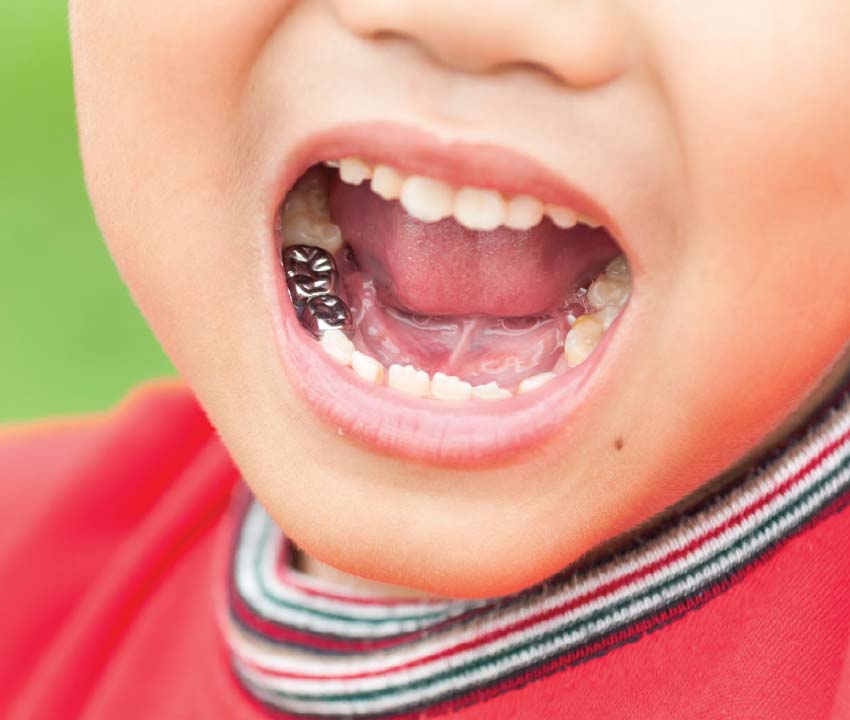As parents, we all dread the phrase “your child has cavities.” However, it is essential to understand that most of the school-aged children suffer from dental cavities; research indicates 45% of children suffer from dental cavities. Cavities are prevalent among kids because the enamel isn’t as thick as in adults hence more prone to infections. Some parents may ignore this by the comfort that the baby teeth will eventually fall out. Although they are temporary, understand that it will be some time before falling out. According to the American Dental Association, the first baby tooth sprouts at around six months, and it takes about two to three years for all the twenty to appear. Losing teeth then begins at approximately six years, but the baby molars fall out at 12 or 13 years of age. Hence, ensuring these teeth remain healthy until they naturally fall out is essential. These baby teeth are critical in these ways:
- Play a part in learning speech
- Chewing food for nourishment
- Saving space for adult teeth.
Among the solutions to repair these teeth is by taking the child for filling or the stainless steel crown solution. Note that filling only works when the cavity is minor; thus, the proper functioning of the tooth is not restored in large cavities.
What are the stainless steel crowns?
A stainless steel crown is a metal cap that is used by paediatric professionals on baby teeth to repair decayed ones and protect them from further decay. Besides, these metal caps are made to fit the exact shape and size of the baby molar. They cover teeth with extensive cavities. However, stainless steel crowns are better off for teeth that only show when smiling or speaking as well as molars. We’d all hate to have our kids as objects of embarrassment among their peers or draw too much unnecessary attention to themselves.

How do they help save the baby tooth?
It prevents further decaying of the tooth
The stainless crowns are fit over teeth after the decayed part of the tooth has been extracted. With the decayed segment gone, the tooth is at a position that it can handle the intense pressure accompanied by chewing. Tooth decay in baby teeth is dangerous as it may lead to falling out of the teeth before their time. When the decay extends to the pulp cavity, removal of the infection through pulpectomy is of utmost priority. A pulpectomy is a procedure similar to a root canal but suitable for children.
It protects the other teeth from damage
Ever heard of the adage ‘prevention is better than cure? It applies if you do not treat a diseased tooth, it becomes easier for the decay to spread to the neighbouring teeth. The spread of the rot in the mouth translates in the child experiencing a lot of pain. Therefore, consulting a paediatrician dentist is vital to curb the spread of the decay.
They are durable
Stainless silver crowns are advantageous as they are both durable and inexpensive. They don’t fall out before the due time. The top will stay put until the baby tooth comes off. It means you do not have to visit the dentist every other day for re-fixing of the crown. Steel crowns were the only treatment options after quite a long time, which means that researchers had ample time to improve on their quality. According to a 2017 study, stainless steel crowns have a better survival rate when compared to fillings with a 6% durability in three years.
Preserves the tooth’s natural structure
During placement of the crown, it only affects a small part of the tooth. Stainless crowns are thin in size. Hence, you do not require to remove more of the tooth.
They are easy to clean
These crowns contain a smooth polished surface making them easy to clean. You do not need to worry about the stains being in the child’s mouth. The fact that the material that makes these crowns is silver does not mean that food particles will remain stuck on the crown even for children with difficulties observing daily oral hygiene. Remember that it functions just like a typical crown.
Supports a baby tooth that has initially undergone filling
There are times when a filling is too huge to be backed by an already wearing off tooth. In such cases, a crown supports the tooth by protecting it from breaking apart and holding the parts together. Thus, the baby tooth is not lost before its time to come off.
Conclusion
As a parent, take all measures possible to ensure your child’s baby teeth stay in place before they are naturally shed off. Baby teeth are ‘space holders’ for permanent teeth. It provides that when it is time for permanent teeth to erupt, they do not appear crooked or crowded. It, in turn, reduces chances of undertaking extensive orthodontic treatment later on. After placement of the crown, your child should not eat until all the local anaesthetic has worn off. It is to minimise the chances of biting their lips and cheeks out of numbness. Also, avoid giving the child sticky foods as they may alter the positioning of the crown. Finally, ensure your child observes dental hygiene and care. Save your child from possible misalignment and unnecessary pain by getting them stainless steel crowns.






